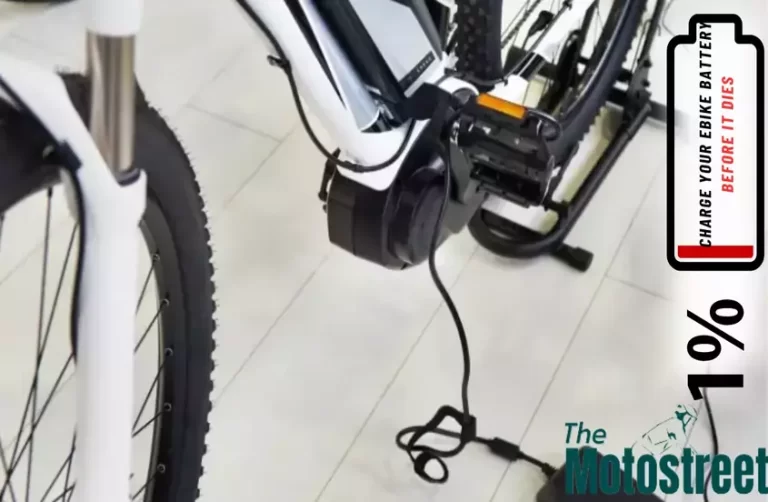How to Know if Your Mountain Bike Tires Need Replacing
How to Know if Your Mountain Bike Tires Need Replacing. Have you been hitting the trails lately and feeling like your mountain bike tires are slowing you down or making the ride bumpier than usual? If so, it might be time for a new set. As much as we hate to admit it, mountain bike tires don’t last forever. But how do you know when it’s really time to replace them? Here are a few signs to look out for so you can keep riding strong and safe all season long. If your tires are more than a couple years old, are visibly cracked or dry rotted, or have started to lose tread and grip, it’s probably time for an upgrade.

New tires can make a world of difference in your ride quality and safety, so don’t put it off if you’re due. Keep reading to learn more about how to determine if your mountain bike tires have reached the end of the trail.
- Wants to know the perfect time to replace your bike tires: click here
5 important questions to guide your assessment of whether your mountain bike tires need replacing:
- Is the tread significantly worn? Look for these signs:
- Disappearing center knobs or side lugs.
- Rounded profiles instead of squared-off edges.
- Cracks or splits in the tread.
- Are you experiencing frequent flats?
- Thinned-out tread offers less puncture resistance.
- Repeated flats, even after careful repairs, indicate a worn tire in need of replacement.
- Are there any cuts, holes, or major deformities?
- Deep gashes or holes expose the inner tube, increasing the chance of pinch flats or blowouts.
- Bulges or blisters signal internal damage to the tire casing.
- Are you struggling with grip and traction?
- Worn knobs can’t dig into the terrain, especially on loose surfaces or in wet conditions.
- This compromises control, braking power, and climbing ability.
- How old are your tires?
- Rubber, even if unused, degrades over time.
- Dry, brittle, or hardened tire compounds offer less grip and are more prone to cracking and failure.
Assessing Your Mountain Bike Tires for Wear and Tear
Your mountain bike tires take a beating, so it’s important to check them regularly for wear and tear.
Look for cracking or dry rot in the sidewalls, especially if your bike has been stored for a long time. If there are deep cracks, it’s best to replace the tires. Tires that are more than 6 years old should also be replaced, even if they look OK.
Examine the tread for signs of damage or balding. If the center tread is worn down by more than 50-60% or you start noticing more punctures and loss of control on turns, it’s probably time for new tires.
Check that your tires still hold air well and inflate them to the recommended PSI listed on the sidewall. Under inflated tires wear out faster and don’t perform as well.
Give your front and rear tires a spin to check for wobbles or hops, which indicate the tread or internal casing has been damaged. If a tire isn’t spinning smoothly, replace it before your next ride.
It’s not worth risking an accident to squeeze a few more miles out of worn out tires. Regular checks and proactively replacing your mountain bike tires will help keep you safe and riding confidently. Staying on top of maintenance is key to maximizing performance and enjoyment of your bike.
Recommended Tire Tread Depth for Mountain Biking
When those knobby tires start looking a little worse for wear, it’s probably time for replacement. But how do you know when they’re past their prime?
Generally, for mountain biking, you’ll want at least 1/4 inch of tread depth remaining. Any less and traction starts suffering, especially on loose or wet terrain. Check your tires by inserting a penny into the tread groove. If part of Lincoln’s head is covered, you’re still good to go. If not, new tires will make a world of difference in control and handling.
It’s also a good idea to inspect your tires for damage like cracks, splits, or punctures. These severely impact strength and performance. Even small holes or tears can let air escape and are dangerous at high speeds.
Lastly, if your tires feel squirmy or squishy, the rubber has likely started to harden. This happens over time and with exposure to elements like ozone and UV radiation. Hardened rubber has less grip and flexibility, so replacing tires every 3-5 years is recommended for safety.
Staying on top of tread depth and tire condition helps ensure you get maximum life from your tires while still being able to ride confidently. Your wheels and riding experience will thank you. Keep an eye on those treads and be ready to replace when needed.
Signs Your Tires Are Due for Replacement
When should you replace your mountain bike tires. There are a few signs it may be time for a new set of treads.
Bald or Cracked Tread
If your tire tread is visibly bald, cracked, or worn down, it’s unsafe to ride. Mountain bike tires provide traction and control on trails, and worn down tread won’t grip the ground effectively. Replace your tires if the tread depth is 1/8 of an inch or less.
Age
As a general rule, start thinking about new tires after 3-5 years. Tires break down over time, even if they’re not being ridden. The rubber compound dries out and cracks, and the casing can weaken. If your tires are over 5 years old, it’s best to replace them, even if the tread looks okay.
Punctures
If you’re getting frequent punctures, tiny holes or leaks in your tires, it may indicate the casing and tread are breaking down. Patching multiple holes or having tires that won’t hold air is unsafe and frustrating. In this case, new tires will save you time, money and headaches down the road.
Performance
If your mountain bike just doesn’t handle or brake as well as it used to, worn out or damaged tires could be the culprit. New tires can significantly improve your control, cornering and braking power on the trail. For maximum performance and safety, inspect your tires regularly and replace them when needed.
Factors That Impact Tire Wear on Mountain Bikes
The tires on your mountain bike endure a lot of wear and tear, especially if you frequently ride on rough, uneven terrain. Several factors determine when it’s time to replace your tires.
Tread Wear
The tread pattern on your tires provides grip and traction. As the tread wears down from use, your tires will become more prone to slipping on rocks, roots and loose dirt. If the tread is worn smooth in the center, or you start noticing your tires sliding more often, it’s a sign you need new tires.
Cracks or Damage
Inspect your tires for any deep cracks, punctures or tears in the rubber. Damage like this compromises the integrity and strength of your tires. If you see cords or threads showing through cuts in the rubber, replace the tire immediately.
Age
Rubber tires naturally harden and break down over time, even with limited use. Most mountain bike tire manufacturers recommend replacing your tires every 3 to 5 years to ensure maximum performance and safety. The production date is often printed on the sidewall of the tire.
Handling and Cornering
If your bike feels unstable, is harder to turn or leans to one side, your tires may be unevenly worn. For the best handling, tires should be replaced in pairs. Worn out or damaged tires can be unsafe, especially on rough mountain bike terrain.
When in doubt, it’s best to replace your mountain bike tires. Your safety depends on having tread that grips, rubber that’s pliable, and tires that handle predictably. New tires will also instantly improve your ride quality and confidence on the trails.
Best Practices for Extending Tire Life on Your MTB
To get the most life out of your mountain bike tires, follow these best practices:
Inspect Tires Regularly
Check your tires before and after each ride for any cracks, tears or punctures in the tread or sidewall. Replace immediately if you see fabric showing through.
Maintain Proper Pressure
Under inflated tires wear out faster and don’t handle as well. Over inflated tires reduce traction and handling. Find the recommended PSI range printed on the sidewall and check pressure regularly with a quality gage.
Rotate Tires
If your rims allow it, rotate your front and rear tires every few rides. This helps distribute wear more evenly so they last longer. The front tire usually wears faster, so moving it to the rear extends its life.
Clean Tires
Wipe down tires after riding to remove any embedded rocks or debris. Use a stiff brush to clean the tread and sidewalls. This prevents damage and uneven tread wear, helping your tires live longer.
By closely monitoring your mountain bike tires, keeping them properly inflated, rotating and cleaning them regularly, you can significantly increase how long they last before needing replacement. Care for your tires and they’ll care for you in return with many miles of adventure ahead.
For more information:
visit our site: The moto street
Conclusion
So there you have it, a few tips to help determine if it’s time for a new set of tires for your mountain bike. Riding on worn or damaged tires is dangerous and can lead to loss of control or flats at the worst possible time. Your tires are your only contact with the ground, so keeping them in good shape is critical for performance, handling, and safety. If you start to notice your tires showing signs of significant wear like exposed cords, cracking, or bulging, it’s best to replace them. The small investment in a new set of tires will give you peace of mind and allow you to ride with confidence knowing you have quality, well conditioned tires under you. So do your pre ride check, keep an eye out for any changes as you ride, and if anything seems off, consider it a sign that it might be time for an upgrade. New tires can breathe new life into your bike and allow you to get the most out of every ride. Your tires have given you miles of memories give them a proper send-off and treat yourself to a new set.






